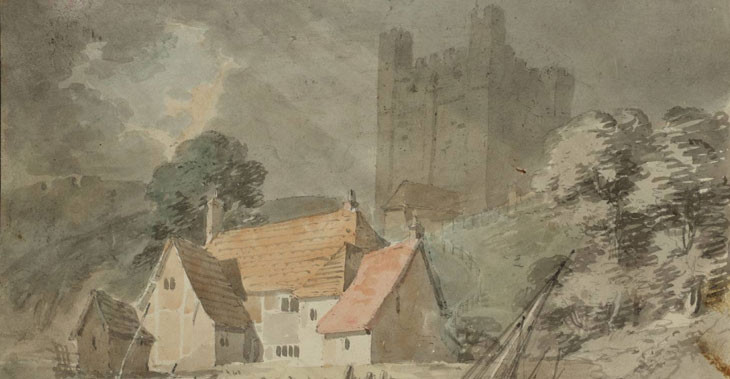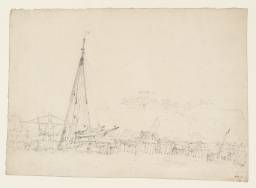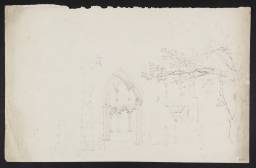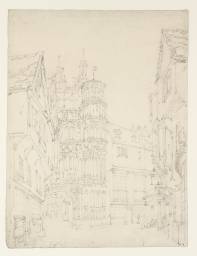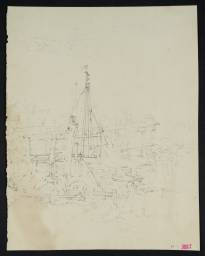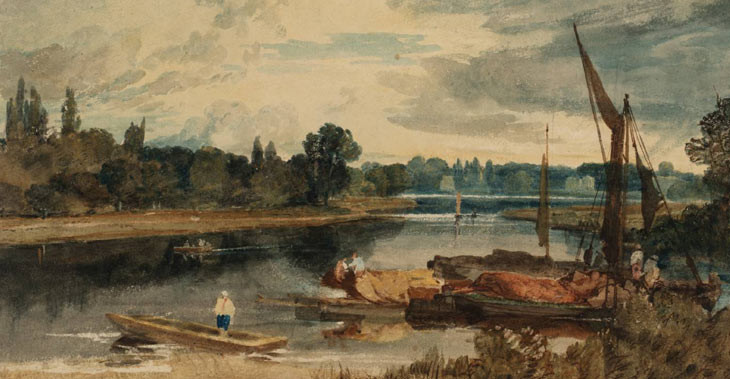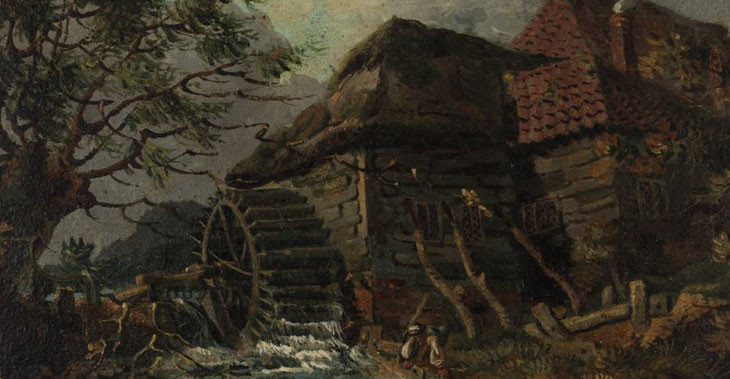From the entry
Although Turner was much occupied with developing the subjects he had gathered in his tours to Oxford, Bristol, the Marches and Wales in 1792–3, he was also continually adding to his stock of views from shorter trips into the counties immediately around London. His earliest finished views of the capital itself date from this time. The pencil drawings in this group are the first full manifestations in Turner’s output of what has come to be known as the ‘Monro School’ manner. He probably began to attend Dr Thomas Monro’s so-called ‘academy’ at his house, no.8 Adelphi Terrace, London, in 1793, copying works by Edward Dayes (1763–1804) and John Robert Cozens (1752–1797) and others who were represented in Monro’s collection. Monro (1759–1833) also borrowed work from his neighbour John Henderson (1764–1843) whose own amateur drawings provided some models for the copyists. Henderson seems to have been instrumental in ...
D00157–D00160, D00163–D00173, D00175, D00345, D00346, D00355, D00356, D00373, D00380, D00381, D00383, D00385–D00387, D00401, D00684, D00695, D00696, D00711, D01100, D01109, D01110, D01881, D01893, D40051, D40240, D40254, D40333
Turner Bequest XV A–D, XVI A–K, XVI M, XXI R, S, XXII B, C, T, XXIII F, G, I, K–M, a, XXVII W, XXVIII J, K, XXIX F, XXXVI F, O, P, XLIV E, Q
Turner Bequest XV A–D, XVI A–K, XVI M, XXI R, S, XXII B, C, T, XXIII F, G, I, K–M, a, XXVII W, XXVIII J, K, XXIX F, XXXVI F, O, P, XLIV E, Q
Although Turner was much occupied with developing the subjects he had gathered in his tours to Oxford, Bristol, the Marches and Wales in 1792–3, he was also continually adding to his stock of views from shorter trips into the counties immediately around London. His earliest finished views of the capital itself date from this time.
The pencil drawings in this group are the first full manifestations in Turner’s output of what has come to be known as the ‘Monro School’ manner. He probably began to attend Dr Thomas Monro’s so-called ‘academy’ at his house, no.8 Adelphi Terrace, London, in 1793, copying works by Edward Dayes (1763–1804) and John Robert Cozens (1752–1797) and others who were represented in Monro’s collection. Monro (1759–1833) also borrowed work from his neighbour John Henderson (1764–1843) whose own amateur drawings provided some models for the copyists. Henderson seems to have been instrumental in encouraging Turner to make copies (after his own drawings) and original studies of subjects at Dover. Turner’s visits to Finchley and St Albans may have been prompted by Monro’s interests in the area: he had a country house at Bushey, and ran an asylum at Monken Hadley, where his brother James also had a house, seen in the background of Turner’s watercolour of the adjacent church (private collection).1 Turner’s mother, who was insane, was cared for at Monken Hadley for a time, before being transferred to Bethlem Hospital (Bedlam); she was to die in its new building in 1804.
Monro’s own drawings are usually executed in black chalk with India ink stump, in the manner of Thomas Gainsborough (1727–1788); this technique was not adopted either by Turner or by his colleague at the sessions, Thomas Girtin (1775–1802). They later told Joseph Farington (1747–1821), as he noted in his diary for 12 November 1798, that ‘they had been employed by Dr. Monro 3 years to draw at his house in the evenings. They went at 6 and staid til Ten. Girtin drew in outlines and Turner washed in the effects’.2 The pencil style of Turner and Girtin is almost identical at this time, and it would seem plausible that Girtin’s decisive manner influenced Turner; but it is possible to trace Turner’s own style evolving steadily and purposefully towards this point in the drawings of the preceding year or so catalogued in earlier sections. For the bulk of the ‘Monro School’ copies in the Bequest see subsequent sections.
The most important influence on the pencil drawing of both young artists is neither Gainsborough nor Philippe Jacques De Loutherbourg (1740–1812) whose style played a silent role in moulding Turner’s work of 1791–2 (see D00391, D00392 and D00396; Turner Bequest XXIII Q, R, V), but Canaletto (Antonio Canal 1697–1768), the Venetian view-painter who had worked in London between 1746 and 1755. Canaletto’s distinctive, rhythmic line, variegated with ripples, dots and dashes, had been adopted in a modified form by Farington, through whom the influence was perhaps passed to the younger generation, though Turner and his friends may well have seen Canaletto’s drawings for themselves. The degree of elaboration in the architectural studies marks a new phase in Turner’s development. Although occasional attempts are failures, several are remarkable tours de force, creating balanced compositions, harmonious tonal patterns and a vivid realisation of picturesque gothic detail and crumbling masonry.
How to cite
Andrew Wilton, ‘London and the Home Counties 1793–5’, April 2012, in David Blayney Brown (ed.), J.M.W. Turner: Sketchbooks, Drawings and Watercolours, Tate Research Publication, December 2012, https://www

